The National Flag.
There is a lot of confusion about the history of the Australian flag, of which most Australians today are blithely ignorant. It’s understandable though, the history was confusing, partly because people do not realise that the original National flag was not the Red or Blue Ensign nor even that there was a difference.
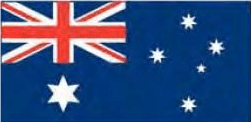
The Blue Ensign, for use on official and naval ships as of 1903.
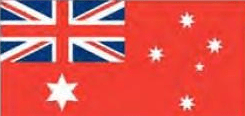
The Red Ensign, for use on merchant naval ships as of 1903.
Now is the time for some definitions …
An ensign, following British tradition, is the flag flown from naval and from merchant naval ships. A jack (as in Union Jack) is a small flag traditionally flown from the jackstaff at the bow of a ship. At the time of federation, the Union Jack was the national flag to be flown on land.
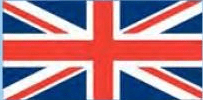
The Union Jack.
After being chosen by public competition, the Red and Blue Ensigns were gazetted in 1903. The ‘Commonwealth Star’ was changed from 6 points to 7 in 1908. Also in 1908, which flag to fly on forts was changed, from the Jack to the Australian (Blue) Ensign.
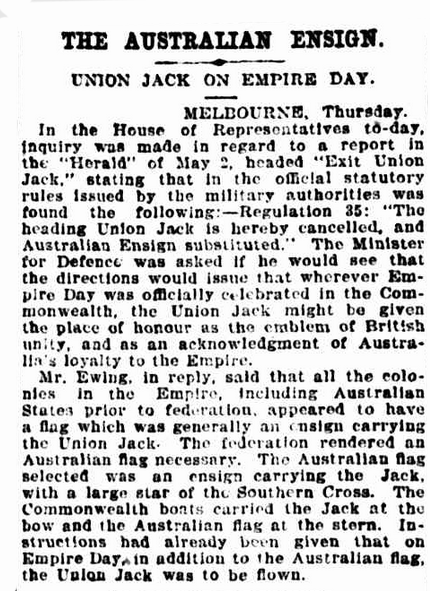
The Sydney Morning Herald, 8th May 1908 page 5.
In 1911, the Australian Ensign became (unless vice-regal representatives were present) the flag to salute at parades and reviews.
Not everyone was happy with the adoption of the gazetted 1903 or 1953 designs. The rivalry between NSW and Victoria played out here (as elsewhere) with some from NSW preferring ‘their’ style of flag.
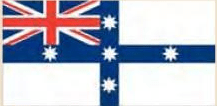
The 1832 NSW Ensign, the basis of the ‘Federation/Australian/Commonwealth Flag’, which was not chosen.
None-the less, most state schools hoisted and saluted the Union Jack, and coffins of public figures were draped with it.
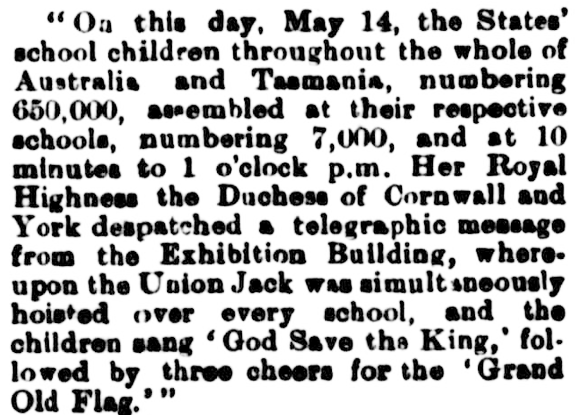
Oakleigh Leader (Vic), 18th May 1901 page 2.
During WW1 Australian forces entered the war with two flags, the Union Jack and the Blue Ensign, to emphasise their dual status as both Australian and British, although the Jack had the higher status as the national flag.
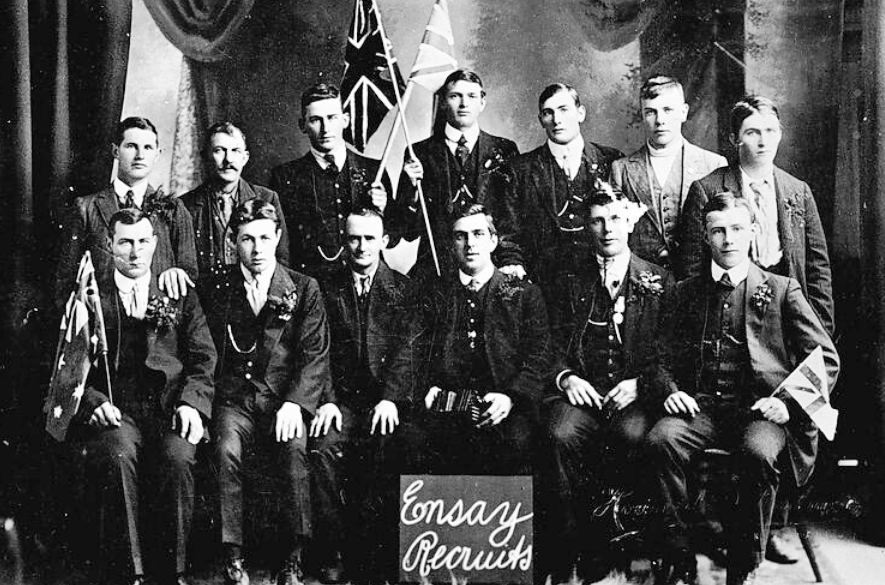
Museum Victoria Collections. Ensay recruits 1915 several flags including the Jack and the Ensign.
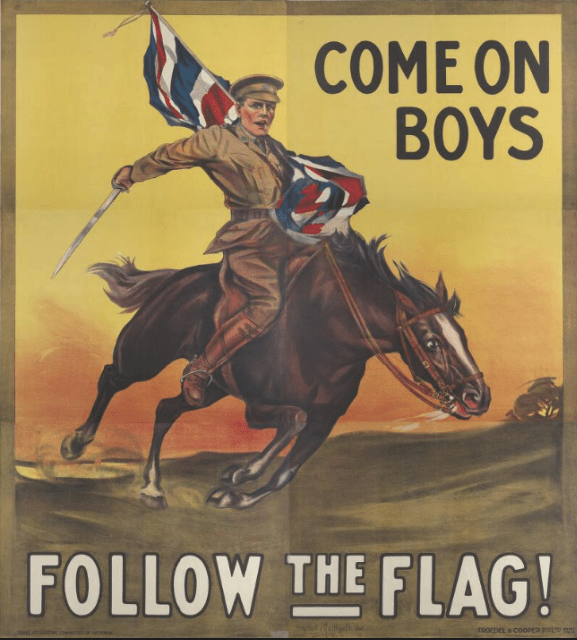
National Library. Recruitment poster (?1916) by James Northfield.
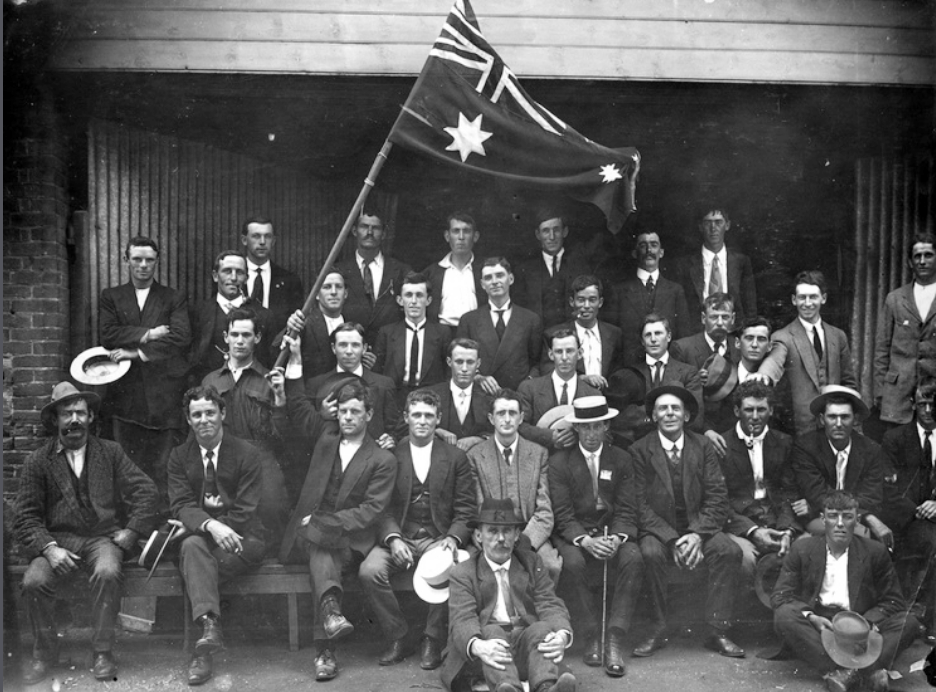
State Library SA #280/1/9/156. New recruits c.1917
Unfortunately, political and sectarian influences both before and after the war lent confusion as to which flag should be used to express loyalty to the Empire and/or Australia. Adding to this confusion was the variance in opinion as to which of the two ensigns should be used, with different customs developing around the country and evolving over time. By tradition, rather than law, the Blue Ensign came to be considered the Commonwealth Government’s flag, and everyone else were to use the Red Ensign. From the late 1930s, the use of the blue became preferred over the red, one reason being that the red being seen as too much like communist flags! However, WW2 began with the issue not settled, and the Union Jack still the national flag.
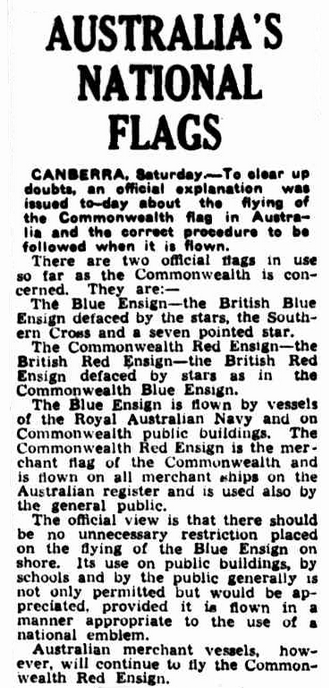
Examiner (Launceston),17th March 1941 page 4.
After the war there was finally time and energy to make a determination as to what would be the national flag. The approaching jubilee year of the nation gave further importance to this issue, as the Commonwealth Government wished to give out national flags to over 10, 000 schools for the celebrations in 1951. Finally, in the 1953 Flags Act the blue was designated as the ‘Australian national flag’, while the merchant flag was called the ‘Australian Red Ensign’.
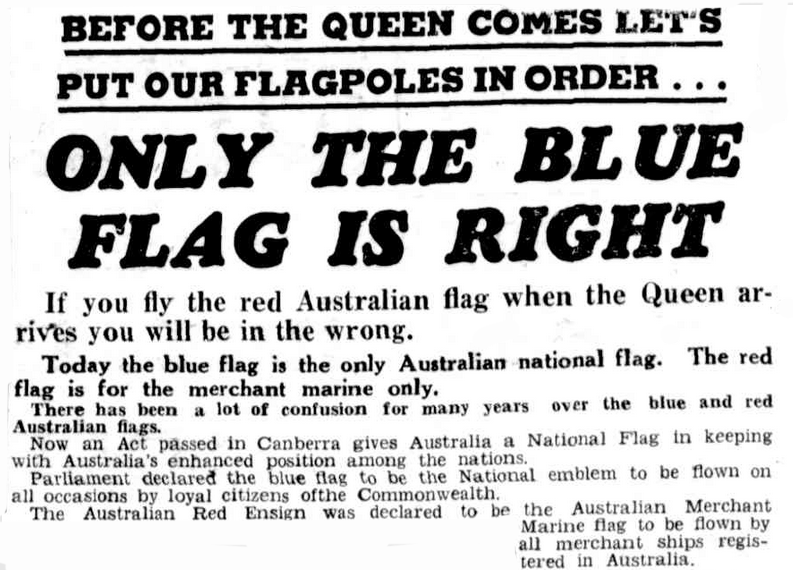
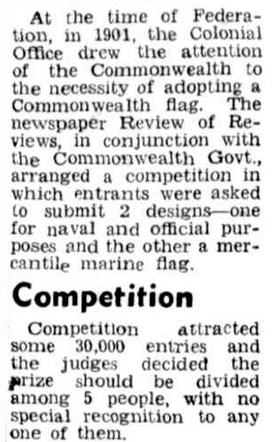
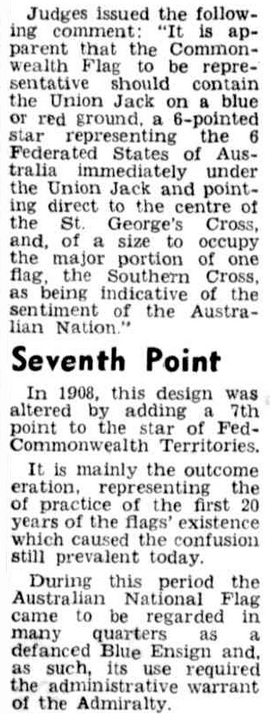
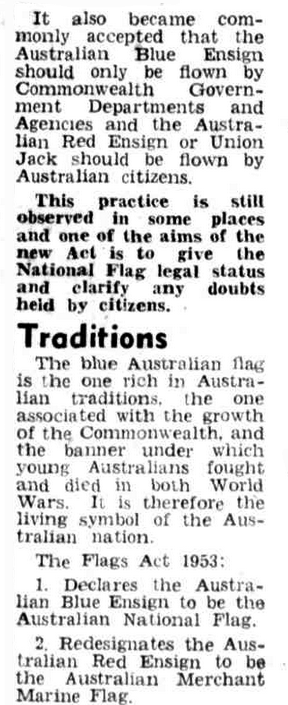
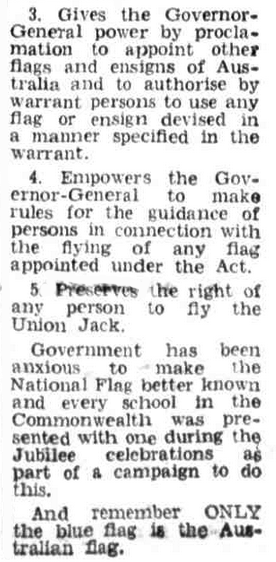
Sunday Times (Perth), 13th December 1953 page 12.
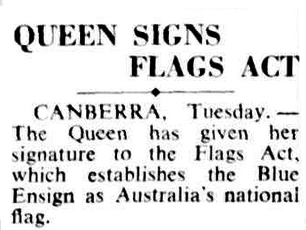
The Sydney Morning Herald , 17th February 1954 page 7.
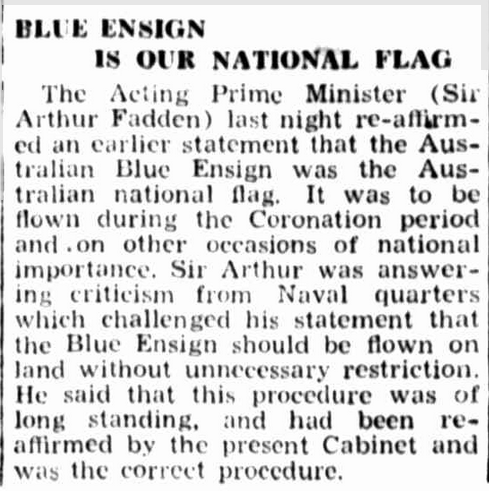
Narandera Argus and Riverina Advertiser (NSW), 21st may 1953 page 2.
Amusingly, the Flag Act had to be amended, as the size of the Commonwealth Star (the one under the Union Jack) was wrong!
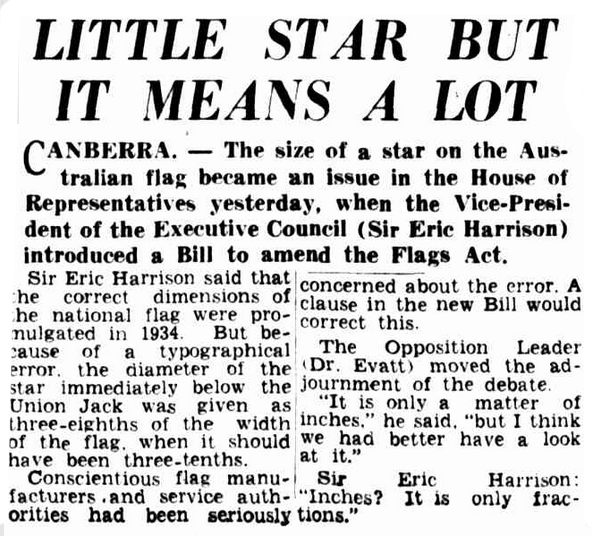
The Courier-Mail (Brisbane), 21st October 1954 page 3.
Also amusingly, Government House in Canberra did not change flying the Union Jack for the legislated Blue Ensign, despite being told to, until 1958.
In summary, despite the above article suggesting the blue ensign was “the flag people died under” during the World Wars, out National Flag was still the Union Jack at that time, and both flags were in use. Debate still grumbles on about our flags, but at least you now have the history set out for you!
For any comments or questions, please use the Contact page.
